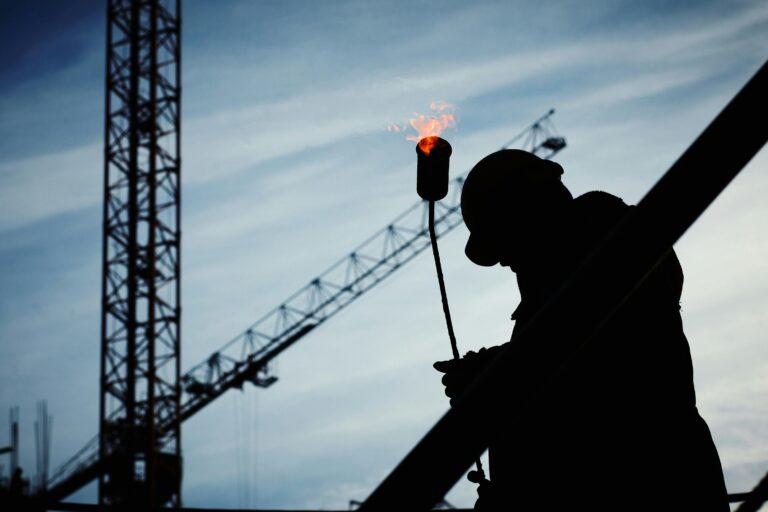Working during COVID-19 (written 7/7/20)
During the COVID-19 pandemic, many businesses have had to close or have experienced a decrease in productivity. To combat the Coronavirus, certain measures must be put into place for a business to operate safely and for employees to be protected whilst working.
Conduct a COVID-19 risk assessment
Employers should conduct a COVID-19 risk assessment. This will highlight the risks from being exposed to COVID-19 and the control measures to be put into place to combat this. Update the risk assessment as control measures change and in line with any changes to government guidance. All employees should have seen a copy and understood the risk assessment. They should then sign it to acknowledge that they have read/understood the risk assessment and have access to it.
Provide information to employees and contractors.
Inform employees of any changes that have been implemented to the control measures in place. If possible, consult with employees on proposed changes to get feedback on whether they will be beneficial and if they will work. Protect those who are at a higher risk of contracting the virus and allow employees to work from home if their roles allow them to do so. Consider how employees may travel to and from work. When they should travel and what they must do upon entering and exiting the premises.
Preparing the working area
Employers should rearrange working areas by moving workstations, tables in canteen areas, working equipment etc. to promote social distancing. Mark out areas using floor markings or signage to help employees socially distance. If the workplace means employees cannot socially distance, the number of persons in the working area should be reduced. Separate employees by using screens; alternatively persons could be assigned to work in specific areas. Also consider the possibility of shift working. Where possible, stagger working times of employees including break times. Commonly used equipment and touch points should be cleaned more regularly. Provide additional handwashing facilities. Open other areas for breaks such as unused rooms or external areas.
Good hygiene
Encourage employees to wash their hands or use hand sanitizer regularly. This could be when entering new areas within the premises, starting new tasks and after using welfare facilities. Employers should provide additional handwashing areas. Inform employees about avoiding touching their faces and coughing/sneezing into their elbows or tissues. Reinforce this with signage.
Information and guidance
Provide employees with information on any procedures that have been implemented to work safely. This information must be shared with them before they return to work. Once back at work it must be reinforced with reminders e.g. signage, updates etc. Don’t forget to share this information with all visitors, customers, and contractors.
PPE
Provide employees with PPE normally used, and any additional PPE that may be needed following the risk assessment. Face coverings are not considered to be PPE; however, employers should support any employees who may wish to wear them. It is not the law to wear face coverings in business premises and is the employee’s choice to do so.
Working from home
Any employee who can work from home must do so. The employer must support employees who are working from home by providing any necessary equipment. Regular contact should be made by having Teams/Zoom meetings, phone calls and emails. Employees working from home long-term should complete a DSE assessment to ensure that they are using a suitable workstation. This will make sure that they are not at risk of related health problems such as upper limb disorders, fatigue, eye discomfort and back pain.
Protecting vulnerable workers
Shielded/clinically extremely vulnerable workers cannot return to the workplace before August 1st. Allow shielded employees to work from home wherever possible. After August 1st 2020 if employees cannot carry out their work at home, they will be allowed to return to the workplace. This is providing that the COVID-19 risk assessment is regularly updated and the employer is doing everything reasonably practicable in order to protect the employee. Pregnant workers must strictly follow any social distancing measures. Pregnant workers who have been advised to shield by the NHS must work from home. They should be put on paid leave if adjustments to their work cannot be made.
Cleaning
Welfare facilities such as canteens and toilets should be cleaned more regularly, whilst ensuring that social distancing is enforced. Clean work areas and equipment between uses. Regularly touched surfaces should be frequently cleaned with ordinary household cleaning products. If there is a suspected case of COVID-19 in the workplace a deep clean of the area must take place immediately.
Maintaining records
Employers must maintain records of staff, customers and visitors to support NHS Test and Trace. A temporary record must be kept for 21 days of all persons in the workplace. Information should be collected in a way that is manageable. The NHS may request these records. Persons do not have to share their details if they do not want to nor do they have to share accurate information. When deleting these temporary records, do so in a way which complies with GDPR. The following information must be collected:
- Staff
- the names of staff who work at the premises
- a contact phone number for each member of staff
- the dates and times that staff are at work
- Customers and visitors
- the name of the customer or visitor. If there is more than one person, then you can record the name of the ‘lead member’ of the group and the number of people in the group
- a contact phone number for each customer or visitor, or for the lead member of a group of people
- date of visit, arrival time and, where possible, departure time
- if a customer will interact with only one member of staff (e.g. a hairdresser, meeting etc.), the name of the assigned staff member should be recorded alongside the name of the customer
- Specific guidance – employers must follow measures put forth in their industry-specific guidance published by the Government. Employers must update their COVID-19 risk assessment and any control measures upon amendment of these guidelines.
For further information on this, see: https://www.hse.gov.uk/coronavirus/assets/docs/working-safely-guide.pdf and https://www.gov.uk/guidance/maintaining-records-of-staff-customers-and-visitors-to-support-nhs-test-and-trace
What should be included in a COVID-19 risk assessment?
- The work activity or situations which may cause transmission of the virus. This should include travelling to/from work, poor personal hygiene, high traffic areas such as canteens, corridors, entrances/exits etc.
- Persons who could be at risk i.e. employees, visitors, contractors, customers, delivery drivers etc.
- Determine how likely it is for someone to be exposed to COVID-19. This could be done either as a number rating (1-5) or low/medium/high.
- In the first instance attempt to eliminate the risk. If this is not possible, control the risk through measures such as increased handwashing, social distancing, maximum occupancy in areas, one-way systems etc. For industry-specific control measures, consult the Government guidance that has been issued.
For further information on this, see: https://www.hse.gov.uk/coronavirus/assets/docs/risk-assessment.pdf and https://www.gov.uk/guidance/working-safely-during-coronavirus-covid-19
What consultation needs to take place with employees regarding COVID-19?
Talk to your employees before they return to work. This is to develop plans on making the workplace secure and to inform them of any measures to be implemented. Repeat these discussions if something changes. For instance, amended guidelines are published; the plans are not working as expected and need to be altered; changes to tasks and work – this could be some equipment not being able to be used, staggering shifts etc. Also very importantly if an employee has been diagnosed with COVID-19.
Social distancing
If equipment is currently shared, this may need to be assigned to one person. If possible, additional equipment should be sourced or the employees reassigned. Tasks may need to be redesigned for one person to do for instance by using mechanical aids. Rooms may need to have a maximum occupancy. Someone may need to be in place to enforce that employees are following these measures.
Organising the workplace
Workstations and tables in break areas may have to be moved to promote social distancing. Screens may have to be installed to separate areas where people may interact. One-way systems may also have to be implemented to maintain social distancing. Hand sanitizer will have to be provided in multiple areas to promote hygiene measures.
Cleaning
Common areas such as door handles, handrails, work equipment and welfare areas should be regularly cleaned. If possible after each use. If travelling to another business premises, ensure that you sanitise your hands before and after visiting. Consider measures needed to handle incoming and outgoing goods.
Information
Ensure employees know everything they need to work safely. Ensure any information is passed on in the best way e.g. emails, posters, inductions, conversations etc. Consider ways to reinforce messages and how to check if employees have understood any messages given to them. Ensure information is in place for anyone else who may visit your workplace.
Wellbeing and support
Ensure employees are prepared to return to work and feel safe to do so. Keep in contact with employees, and if possible, allow employees to work remotely.
For further information on this, see: https://www.hse.gov.uk/coronavirus/assets/docs/talking-with-your-workers.pdf













